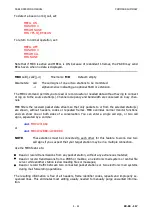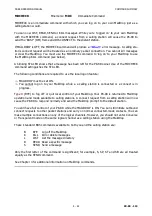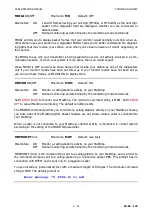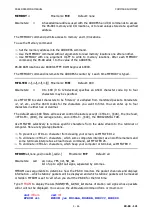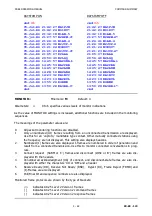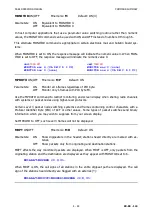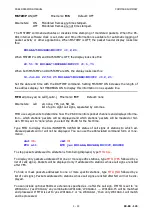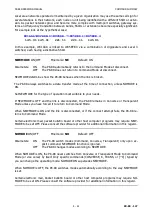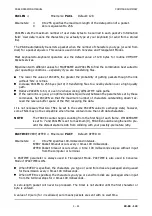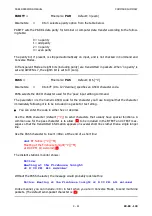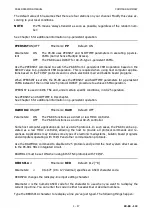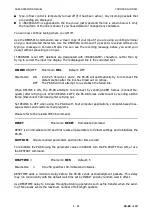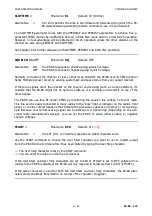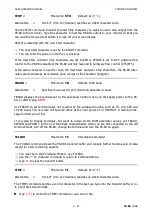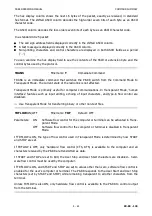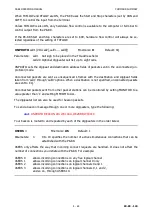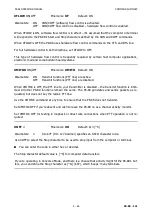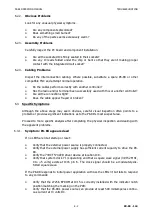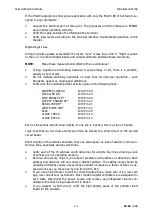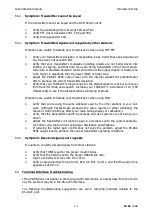
PK-88 OPERATING MANUAL
COMMAND SUMMARY
5 - 56
PK-88 - 131
PASSALL
ON|OFF
Mnemonic:
PASSA
Default: OFF
Parameters:
ON
The PK-88 will accept packets with invalid CRCs.
OFF
The PK-88 will only accept packets with valid CRCs.
PASSALL permits the PK-88 to display packets received with invalid CRC fields; the error-detecting
mechanism is turned off.
Packets are accepted for display despite CRC errors if they consist of an even multiple of eight bits
and are up to 330 bytes. The PK-88 attempts to decode the address field and displays the call
sign(s) in the standard monitor format, followed by the text of the packet.
PASSALL is normally turned off; therefore, the protocol ensures that received packet data is error-
free by rejecting packets with invalid CRC fields.
PASSALL (sometimes called 'Garbage Mode') may be useful for testing a marginal RF link or during
operation under other unusual conditions or circumstances.
When you set PASSALL ON while monitoring a moderately noisy channel, 'packets' are displayed
periodically because there is no basis for distinguishing between actual packets and random noise.
When PASSALL is ON, logging of stations heard (for display by MHEARD) is disabled; the call
signs detected may be incorrect.
PERSIST
n
Mnemonic:
PE
Default: 63
Parameters:
n
0 to 255 specifies the threshold value for a random-number attempt to trans-
mit.
0
Signifies a 1/256th chance of transmitting every SLOTTIME.
255
Signifies 'transmit right away without delay'.
The PERSIST parameter works with PPERSIST and SLOTTIME to achieve true p-persistent CSMA
(Carrier-Sense Multiple Access) in KISS TNC mode and AX.25 operation. However, little improve-
ment will be obtained in AX.25 operation unless other stations on the channel are also using PER-
SIST and SLOTTIME.
When the host (your computer) has queued data for transmission, the PK-88 monitors the DCD
(Data Carrier Detect) signal from its internal modem. The PK-88 waits indefinitely for DCD to go in-
active.
When the channel is clear, the PK-88 generates a random number between 0 and 255. If this num-
ber is less-than or equal to 'P', the PK-88 keys the PTT line, waits .01 × TXDELAY seconds, and
then transmits all frames in its queue. The PK-88 then un-keys the PTT line and returns to the idle
state.
If the randomly-generated number is greater than 'P', the PK-88 waits .01 × SLOTTIME seconds
and repeats the procedure. If the DCD signal has gone active in the meantime, the PK-88 again
waits for DCD to clear before continuing.
The PK-88 waits an exponentially-distributed random interval after sensing that the channel is
clear before trying to transmit. With proper 'tuning' of the PERSIST and SLOTTIME parameters,
several stations sending traffic are much less likely to collide with each other when they simultane-
ously see that the channel is clear.

